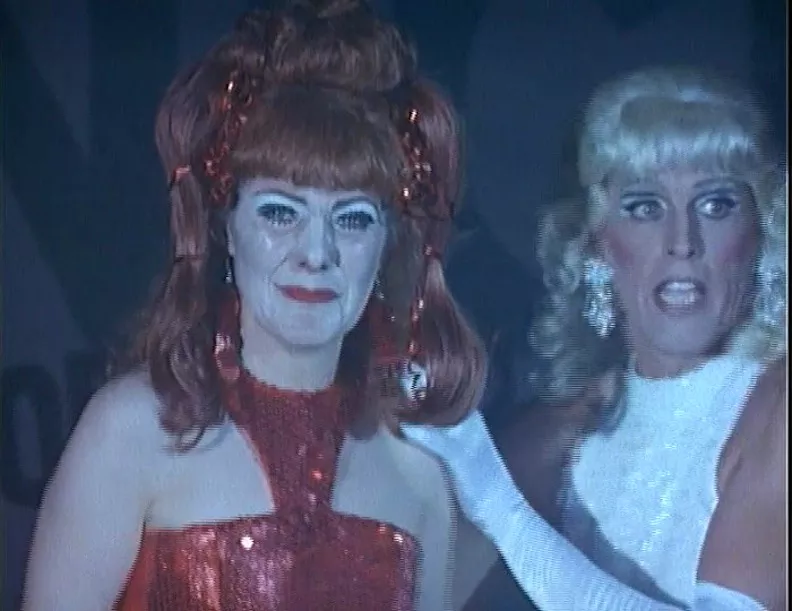In our ongoing queer film retrospective, “A Gay Old Time,” we revisit a true family affair for this Thanksgiving season: the 1991 made-for-TV remake of “What Ever Happened To Baby Jane?” This classic tale offers a unique perspective on the challenges of recreating an iconic film within the LGBTQ community.
Queer classics often become beloved for their larger-than-life performances, sharp dialogue, and themes that resonate with those who feel socially outcast or yearning for something more. “What Ever Happened To Baby Jane?” is no exception, with its historic status as a camp classic. So, how does the notion of remaking such a beloved and controversial queer classic even stand a chance?
Surprisingly, the 1991 version of “What Ever Happened To Baby Jane?” not only confronts some of the elements that made the original memorable but also carves out its own unique identity. In many ways, this update speaks more directly to what has made it a lasting presence in queer culture.
The story revolves around two sisters: former child star Baby Jane and her sister Blanche, who surpasses her in fame until an accident leaves her paralyzed. The 1962 version is famous for bringing together Joan Crawford and Bette Davis, igniting Hollywood lore with their on-set rivalry. It also epitomized the “hagsploitation” genre, showcasing former acclaimed actresses descending into madness as they grapple with fading glory, youth, and beauty.
The 1991 remake, however, does not seek to replicate or imitate the original. While it maintains the basic premise, it strives to be its own interpretation of the story, setting, and tone. Instead of delving deeply into sisterly rivalry and codependence, this version emphasizes Baby Jane’s descent into madness and her failed attempt at a comeback. What sets it apart is the casting of real-life sisters Vanessa and Lynn Redgrave, who bring a sense of ease and fun to their roles.

The update also shifts the narrative to the 1990s, allowing it to reflect the changes in the entertainment industry. Blanche watches her old films on VHS tapes, and Jane searches for her movies in video stores. This move aligns the story with the era’s sleazy, low-grade aesthetic, enhancing the thematic elements.
What truly sets this remake apart is its direct incorporation of queer appeal into the narrative. The character of Edwin is split into two men here, Dominick and Billy Korn, both embodying elements of LGBTQ representation. Billy, a sleazy gay aspiring artist, partners with Jane, promising her a comeback while harboring darker intentions. His character represents a reflection of the fandom that the original Baby Jane created, weaponizing it to contribute to the protagonist’s mental spiral.
In many ways, remaking an iconic movie invites criticism and comparison, especially when the original holds a special place in culture. However, the 1991 version of “What Ever Happened To Baby Jane?” manages to navigate these challenges by creating a world, style, and themes that both pay homage to the original and subvert it. It is a parody, a remake, an homage, and its own unique creation—a testament to the enduring appeal of the story that continues to captivate queer audiences.
David Greene’s “What Ever Happened To Baby Jane?” (1991) is now available for streaming on various platforms, offering a fresh take on a classic tale.

